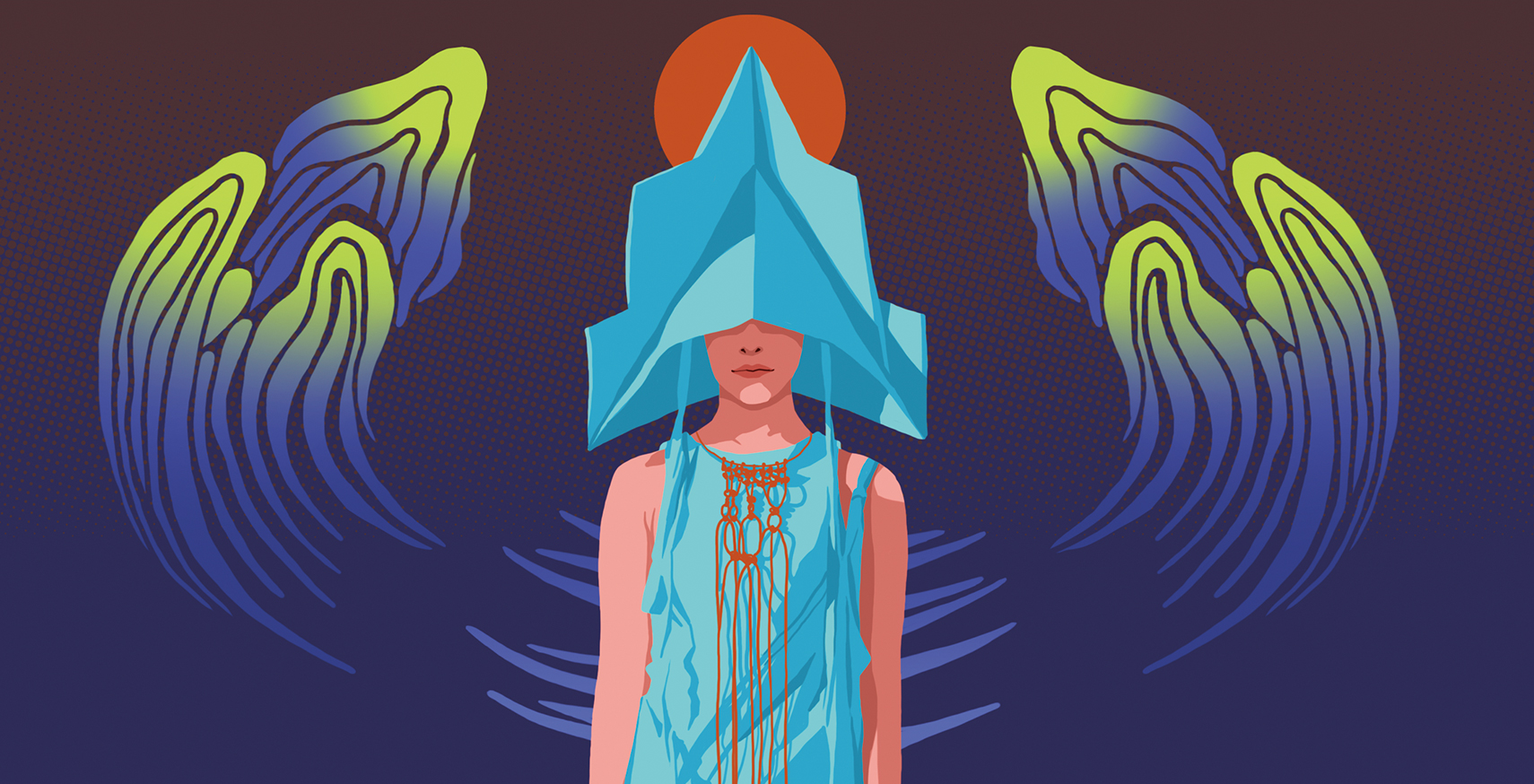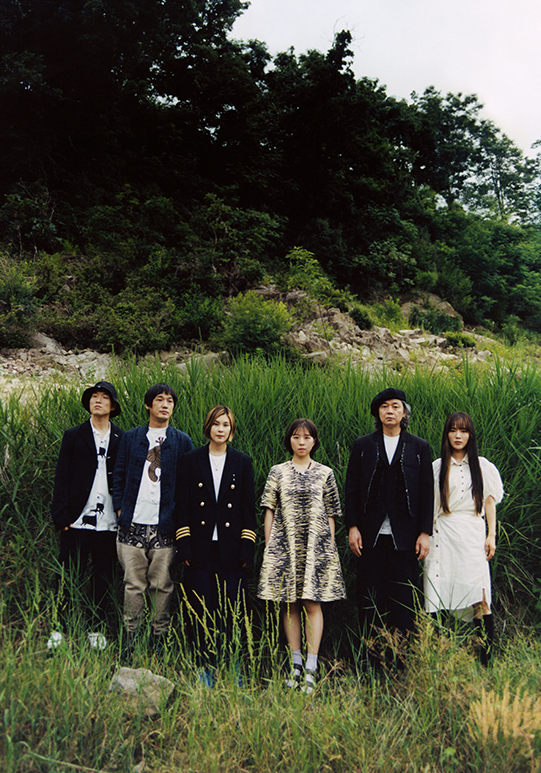July 2021

July 2021
The Korean music industry is buzzing over traditional Korean music, or gugak. With collaborations between K-pop and the time-honored genre on the rise, observers predict a new heyday for gugak.
Written by
Lim Jinmo,
pop columnist
Illustrated by
JB
Photo courtesy of
Yonhap News
 Chu da hye Chagis’ album covers often meld vintage components with the traditional.
Chu da hye Chagis’ album covers often meld vintage components with the traditional.
Ignored by the masses in Korea, gugak drew little attention as a possible cultural export until recently. However, the global boom in all things Korean through Hallyu seems to have resurrected the genre. Fusion between gugak and pop music drew a favorable response last year after years of mainstream aversion to traditional music.
“A Tiger is Coming” by LEENALCHI, a seven-member alternative pop band with pansori vocalists and instrumentalists, struck the right chord last year, fusing traditional elements with the rhythmic and melodic aspects of their crossover music. The group attracted K-pop fans with music considered neither strange nor outlandish.
A video with 320 million views featuring LEENALCHI’s singing and dancing Traditional dancers appear, followed by corresponding segments of Korean lyrical storytelling, or pansori, and a flurry of accompanying dances. K-pop audiences last year welcomed the KTO-produced video with no hint of alienation toward its traditional elements.

Social media plays a major role in rapidly spreading content, just as it contributes to building a fan base. Nowadays, global demand for authentic or traditional Korean music is rising alongside that for K-pop. Professors at the Berklee School of Music in Boston are said to encourage their Korean students to pursue traditional music based on Korean heritage rather than American pop.
K-pop sensation BTS’ song “Idol” released in 2018 earned praise for incorporating elements of Korean folk music elements through chants and rhythms. Many media outlets said the music felt modern and traditional at the same time, lauding the coexistence of East and West and past and present.
The girl group BLACKPINK gave traditional attire, or Hanbok, a huge boost by wearing it in the music video for “How You Like That.” The four members also wore Hanbok on the “Tonight Show with Jimmy Fallon” in the U.S.
Another girl group, G-Idle, uses music fused with traditional qualities true to its Korean roots. Three of its songs especially touch on Korean tradition with gugak remixes. G-Idle reportedly has a solid overseas fan base interested in Korean traditions.

Increased interest in gugak is the result of greater awareness of K-pop and Hallyu, which in turn has spurred global demand to learn more about Korean culture, both traditional and modern.
Music pundits say gugak thus has phenomenal potential to make a breakthrough overseas. Tellingly, the gugak-plus-psychedelic rock and funk band SsingSsing raked in 5.7 million views when National Public Radio of the U.S. posted a video of the group’s performance for the station's “Tiny Desk Concert” series in 2017. Instead of using pansori like LEENALCHI, this group relies on folk songs, or minyo.
SsingSsing members have continued crossover-pop activities including collaborations with LEENALCHI’s lead musician and the head of the band Chu da hye Chagis. The latter mixes elements of shaman rituals, or gut, with funk and reggae. The large-scale ensemble Be-Being, a fusion group that uses Buddhist music, also has potential to win overseas fans.
A genre ignored by the domestic market
is now undergoing a resurrection.
 A gugak band performs at the outdoor parking lot of the Gyeongbokgung Palace in Seoul,
A gugak band performs at the outdoor parking lot of the Gyeongbokgung Palace in Seoul,
as part of the Palace Concert series hosted by the Cultural Heritage Foundation in 2020. © YonhapNews
 LEENALCHI performs at a recent concert. © Hike Co., Ltd
LEENALCHI performs at a recent concert. © Hike Co., Ltd